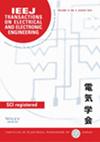求助PDF
{"title":"辐射传热对磁旋弧的影响","authors":"Makoto Nobuki, Satoshi Hirayama, Yoshitaka Inui","doi":"10.1002/tee.70019","DOIUrl":null,"url":null,"abstract":"<p>This study examined the influence of radiative heat transfer on magnetic rotary arc plasmas using radiative magnetohydrodynamic numerical simulations. The radiation field was analyzed using the radiative transfer equation, which considers the energy gained by the emission and that lost by the absorption of traveling radiation beams. Numerical simulations were performed using the radiative transfer equation and net emission coefficient models for comparisons. The radiative transfer equation model considers the radiative heat transport from the center to the fringe of the arc column; therefore, the arc column is thicker, and the current density and arc-center temperature inside the arc column are lower. In the net emission coefficient model, the arc column is thinner, and the temperature at the center of the arc becomes excessively high owing to the intense Joule heating. In the vicinity of the current-zero point, the difference in the electrical resistance of the arc column due to the radiation model becomes significant, and the net emission coefficient model overestimates the electrical resistance. This difference in electrical resistance based on the radiation model increases with the applied magnetic flux density. © 2025 Institute of Electrical Engineers of Japan and Wiley Periodicals LLC.</p>","PeriodicalId":13435,"journal":{"name":"IEEJ Transactions on Electrical and Electronic Engineering","volume":"20 8","pages":"1315-1322"},"PeriodicalIF":1.1000,"publicationDate":"2025-04-09","publicationTypes":"Journal Article","fieldsOfStudy":null,"isOpenAccess":false,"openAccessPdf":"","citationCount":"0","resultStr":"{\"title\":\"Influence of Radiative Heat Transfer on Magnetic Rotary Arcs\",\"authors\":\"Makoto Nobuki, Satoshi Hirayama, Yoshitaka Inui\",\"doi\":\"10.1002/tee.70019\",\"DOIUrl\":null,\"url\":null,\"abstract\":\"<p>This study examined the influence of radiative heat transfer on magnetic rotary arc plasmas using radiative magnetohydrodynamic numerical simulations. The radiation field was analyzed using the radiative transfer equation, which considers the energy gained by the emission and that lost by the absorption of traveling radiation beams. Numerical simulations were performed using the radiative transfer equation and net emission coefficient models for comparisons. The radiative transfer equation model considers the radiative heat transport from the center to the fringe of the arc column; therefore, the arc column is thicker, and the current density and arc-center temperature inside the arc column are lower. In the net emission coefficient model, the arc column is thinner, and the temperature at the center of the arc becomes excessively high owing to the intense Joule heating. In the vicinity of the current-zero point, the difference in the electrical resistance of the arc column due to the radiation model becomes significant, and the net emission coefficient model overestimates the electrical resistance. This difference in electrical resistance based on the radiation model increases with the applied magnetic flux density. © 2025 Institute of Electrical Engineers of Japan and Wiley Periodicals LLC.</p>\",\"PeriodicalId\":13435,\"journal\":{\"name\":\"IEEJ Transactions on Electrical and Electronic Engineering\",\"volume\":\"20 8\",\"pages\":\"1315-1322\"},\"PeriodicalIF\":1.1000,\"publicationDate\":\"2025-04-09\",\"publicationTypes\":\"Journal Article\",\"fieldsOfStudy\":null,\"isOpenAccess\":false,\"openAccessPdf\":\"\",\"citationCount\":\"0\",\"resultStr\":null,\"platform\":\"Semanticscholar\",\"paperid\":null,\"PeriodicalName\":\"IEEJ Transactions on Electrical and Electronic Engineering\",\"FirstCategoryId\":\"5\",\"ListUrlMain\":\"https://onlinelibrary.wiley.com/doi/10.1002/tee.70019\",\"RegionNum\":4,\"RegionCategory\":\"工程技术\",\"ArticlePicture\":[],\"TitleCN\":null,\"AbstractTextCN\":null,\"PMCID\":null,\"EPubDate\":\"\",\"PubModel\":\"\",\"JCR\":\"Q4\",\"JCRName\":\"ENGINEERING, ELECTRICAL & ELECTRONIC\",\"Score\":null,\"Total\":0}","platform":"Semanticscholar","paperid":null,"PeriodicalName":"IEEJ Transactions on Electrical and Electronic Engineering","FirstCategoryId":"5","ListUrlMain":"https://onlinelibrary.wiley.com/doi/10.1002/tee.70019","RegionNum":4,"RegionCategory":"工程技术","ArticlePicture":[],"TitleCN":null,"AbstractTextCN":null,"PMCID":null,"EPubDate":"","PubModel":"","JCR":"Q4","JCRName":"ENGINEERING, ELECTRICAL & ELECTRONIC","Score":null,"Total":0}
引用次数: 0
引用
批量引用

 求助内容:
求助内容: 应助结果提醒方式:
应助结果提醒方式:


